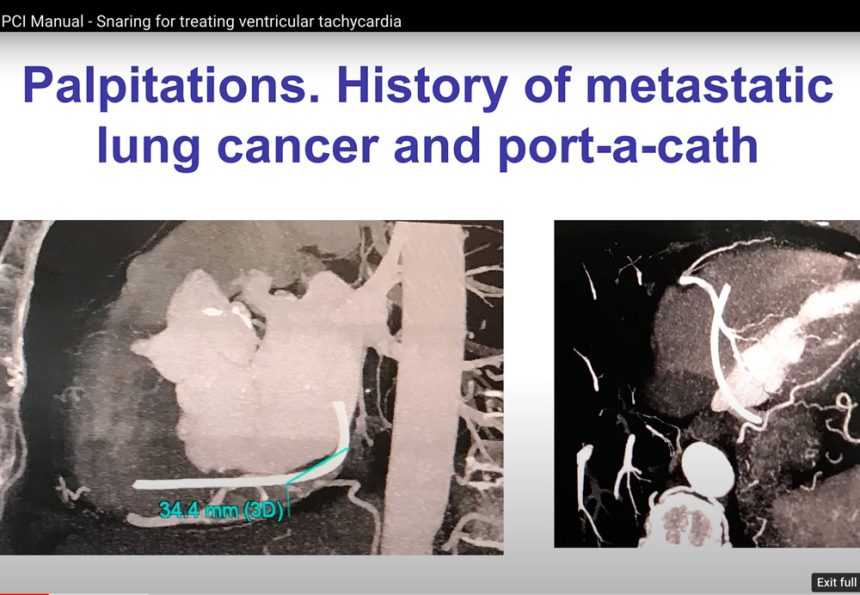Treating Ventricular Tachycardia
A patient with history of metastatic lung cancer and prior port-a-cath insertion presented with palpitations and chest pain and was found to have non-sustained ventricular tachycardia. Coronary CT angiography revealed fracture of the port-a-cath with the distal segment embolized into the coronary sinus. Using right internal jugular access with an 8 French sheath and a 27-45 mm Ensnare device through a 7 French JR4 guide catheter the port-a-cath fragment was successfully retrieved with resolution of the patient symptoms.
All port catheters sold in the US today received approval via the 510(k) process as opposed to the more rigorous testing required for an original device to receive full Pre Market Approval (PMA) by the Food and Drug Administration.
Overall, it is understandable why the portacath was met with so much excitement when it first came out. It made accessing veins for infusion or cancer treatments much easier. The possible negative effects and pending lawsuits may overshadow its initial benefit, however, this device continues to be used during periods of blood transfusions and chemotherapy treatments.











